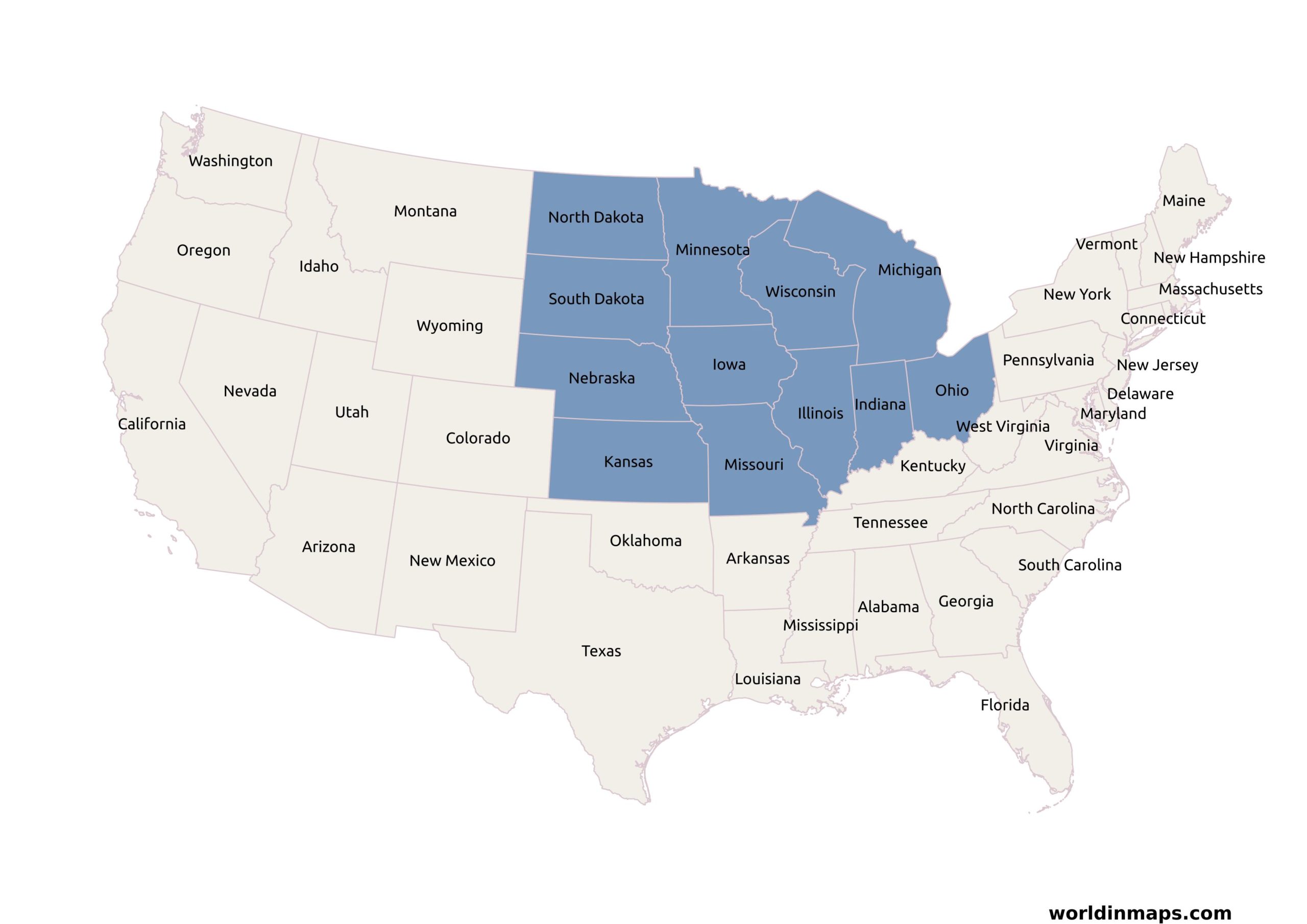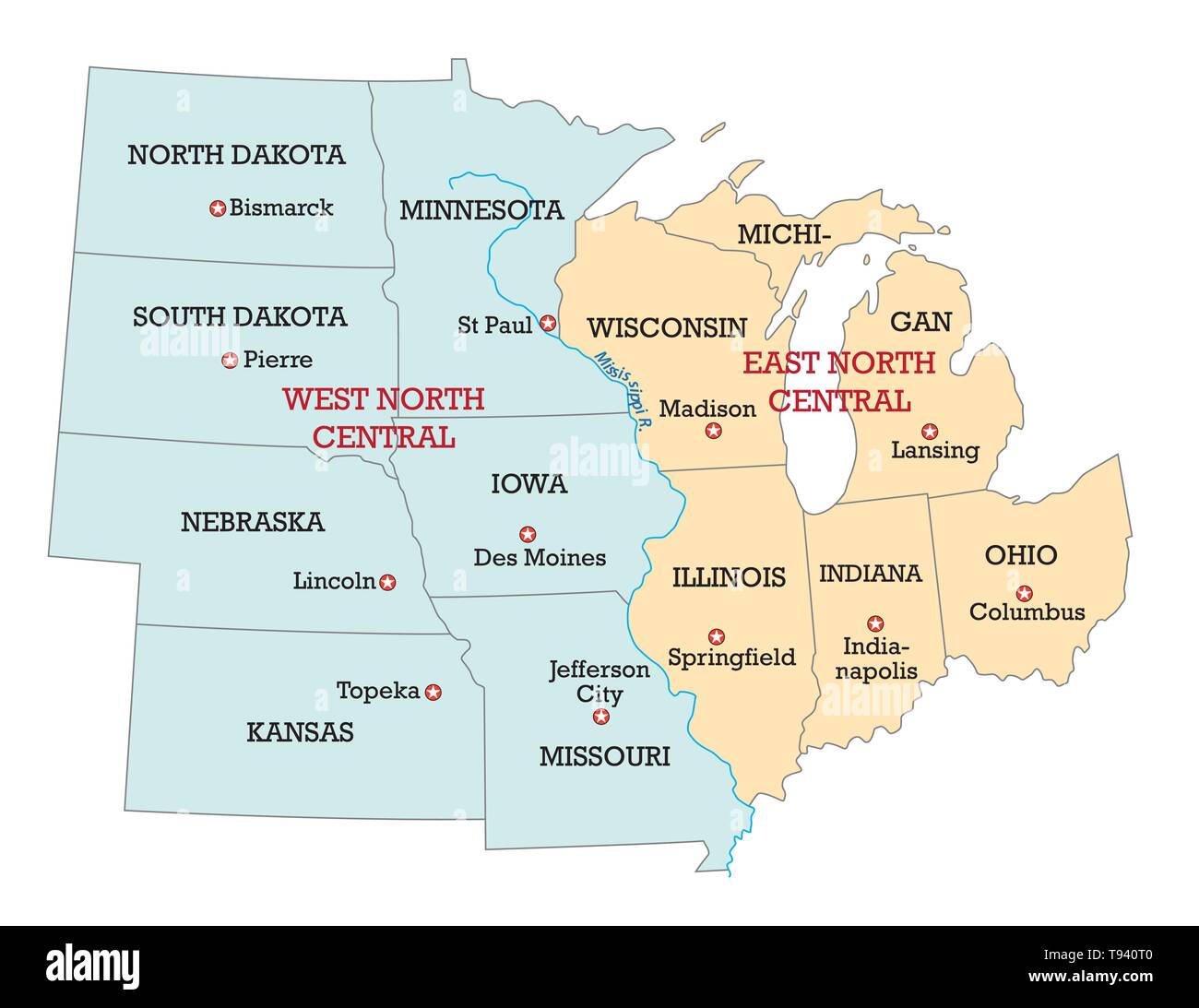
Beyond the Flyover: Unearthing the Enduring Spirit of the American Midwest
To many, the American Midwest is a vast, undifferentiated expanse, a blurred landscape viewed from 30,000 feet – the quintessential "flyover country." It’s the space between the dazzling coasts, a region often reduced to a handful of stereotypes: endless cornfields, stoic farmers, and a quaint, if somewhat unexciting, simplicity. Yet, to dismiss the Midwest as merely a geographical bridge is to overlook the beating heart of America, a region of profound historical significance, economic dynamism, and a deeply rooted cultural identity that continues to shape the nation.
Spanning a dozen states from Ohio to the Dakotas, and from Michigan’s Upper Peninsula down to Missouri, the Midwest is geographically diverse, encompassing the Great Lakes, the mighty Mississippi River, and the sprawling Great Plains. It is a land of dramatic seasons – scorching summers, vibrant autumns, brutal winters, and unpredictable springs – each imprinting its character on the landscape and its inhabitants. This is a region forged by the elements, a crucible that has instilled a quiet resilience and practicality in its people.
Historically, the Midwest embodies the very spirit of American expansion. It was the frontier for waves of European immigrants – Germans, Scandinavians, Irish, Poles, and many others – who arrived with little more than hope and a willingness to toil. They transformed vast prairies into fertile farmland, laying the groundwork for what would become the nation’s agricultural engine. This pioneer spirit, characterized by self-reliance, community cooperation, and an unwavering work ethic, remains a cornerstone of Midwestern identity. As historian Frederick Jackson Turner famously argued, the frontier experience shaped the American character, and nowhere is that more evident than in the heartland.

At its very core, the Midwest is the nation’s breadbasket, an agricultural powerhouse whose fertile soils and industrious hands feed not just America, but a significant portion of the world. Iowa alone, often dubbed the "Corn State," consistently produces more corn than most countries, and its fields, alongside those of Illinois, Nebraska, and Kansas, yield staggering amounts of soybeans, wheat, and livestock. This isn’t just about food production; it’s a way of life, an intimate connection to the land passed down through generations. The rhythmic whir of irrigation pivots, the rich scent of turned earth, and the golden sweep of ripe fields are not just scenery; they are the sinews of the regional economy and the backdrop to countless lives. "The plains are the most honest landscape I know," wrote Ian Frazier, capturing the unpretentious reality of this vital region.
Beyond agriculture, the Midwest was also the crucible of American industry. From the late 19th through the mid-20th century, cities like Detroit, Cleveland, Chicago, and Pittsburgh (often included in the broader Rust Belt definition) became global manufacturing hubs. Detroit, the undisputed "Motor City," revolutionized transportation and assembly line production, putting the world on wheels. Steel mills in Indiana and Ohio, alongside factories churning out everything from farm equipment to appliances, powered an economic boom that defined an era. While the decline of heavy industry in the late 20th century brought significant challenges, earning the region the moniker "Rust Belt," it also fostered a renewed spirit of innovation and diversification. Cities like Pittsburgh and Cleveland, once symbols of industrial decline, have successfully reinvented themselves as centers for healthcare, technology, and advanced manufacturing, showcasing the region’s enduring capacity for adaptation.
The people of the Midwest are perhaps its most defining characteristic. Often described as unassuming, friendly, and deeply community-oriented, Midwesterners possess a quiet strength, a steadfastness born of facing down harsh winters and unforgiving economic shifts. There’s a particular brand of humor – dry, self-deprecating, and often delivered with a twinkle in the eye – and a genuine hospitality that can catch outsiders by surprise. "Midwesterners," observed one commentator, "are a practical people. They don’t much care for pretense, but they’ll always offer you a hand, or a casserole, if you need one." This ethos of mutual aid and neighborliness, rooted in the necessities of frontier life, persists in both rural towns and bustling cities.
And the cities themselves are far from the bland urban centers some imagine. Chicago, the undisputed metropolis of the region, is a global powerhouse of finance, architecture, and culture. Its towering skyscrapers, world-class museums, vibrant arts scene, and legendary food culture (deep-dish pizza, anyone?) rival those of any coastal city. Minneapolis and St. Paul, the "Twin Cities," boast a thriving tech sector, an innovative culinary scene, and a strong commitment to green spaces and progressive urban planning. Kansas City, straddling Missouri and Kansas, is a jazz and barbecue mecca with a burgeoning arts district. These urban centers demonstrate that the Midwest is not solely a rural landscape but a dynamic blend of pastoral tranquility and sophisticated urbanity, each feeding into the other.
However, the Midwest is not without its struggles. Rural depopulation, the lingering effects of deindustrialization, and the brain drain of young talent seeking opportunities elsewhere are real challenges. Political polarization, a national phenomenon, also plays out acutely in the stark contrasts between its liberal urban cores and conservative rural areas. Yet, even in the face of these hurdles, the region continues to evolve. Investment in renewable energy, particularly wind power across the vast plains, is transforming its energy landscape. Startups and tech incubators are flourishing in unexpected places, leveraging the region’s lower cost of living and strong work ethic. Universities like the University of Michigan, Northwestern, and the University of Wisconsin-Madison are engines of research and innovation, attracting talent and driving economic growth.
Ultimately, the American Midwest is a place of profound significance, a foundational layer of the nation’s identity that is often underappreciated. It is a land of hard work and quiet beauty, of community spirit and individual resilience. It’s the region where the seasons truly dictate life, where the land tells a story of perseverance, and where a strong sense of place defines its people. To truly understand America, one must look beyond the coasts and delve into the heartland, for it is here, in the vast plains and industrious cities of the Midwest, that the enduring spirit of the nation continues to thrive, shaping its present and forging its future, one harvest and one innovation at a time. It is far more than just "flyover country"; it is the enduring backbone, the vital pulse, and the authentic soul of America.



